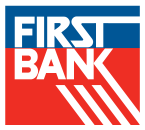If you’re just starting out in the world of banking, it can be very overwhelming. Things like, APR on a credit card, building good credit, applying for a loan; what do these terms entail? You have questions, we have answers. Let’s run through some commonly asked questions as you enter adulthood and transition to a better way of banking.
What does APR on a credit card mean?
When you receive your monthly billing statements, you’ll likely notice the acronym APR. APR stands for annual percentage rate. A credit card’s annual percentage rate is the price you pay when you borrow money. If you pay your balance in full by the end of each month, or per the statement cycle, you can avoid paying interest fees altogether.
Tip: Always read the fine print and understand the terms and conditions of the credit card you are applying for and plan to use.
How can a student or young adult build good credit?
Here are five steps for building good credit:
- Sign up for the right type of credit card
- Be consistent
- Set up automatic payments
- Pay your credit balances
- Remove any negative entries that are paid off from your report
After you’ve been using credit cards for a while and have been responsible with your payments, you should have a good enough history to apply for a personal loan. A small, personal loan would be a great start. These take some time but can build your credit score within six months to a year. Not only will this diversify the types of credit on your credit report, but it is another way that you can prove you consistently make your payments on time.
A great way to build credit is to utilize our Thrive Credit Builder Loan*. Your credit score is important; get the credit score you deserve.
How do you apply for a loan?
Maybe you’ve been thinking about buying your first car or house, but you’re worried about the monthly payments not being something you can afford. This would be a great time to do your homework, ask questions, and find out how much you can afford with useful tools, like the home affordability calculator. Once you think you are ready, consider applying for a loan – big or small. The loan application process shouldn’t be scary. Let’s get you prepared for your future.
If you’d like to learn more about what is needed to apply for a personal loan, check out this article by Forbes. Many financial institutions, like First Bank, will require that you provide the following (or some of these items, depending on your unique circumstances) when filling out a loan application:
- Credit score and history
- This is one of the most important factors lenders will consider when reviewing your loan application. Credit scores are based on your payment history, length of credit history, and your amount of outstanding debt.
- Income
- Minimum requirements will vary by lender. Don’t be surprised, however, if your lender doesn’t disclose minimum income requirements. Evidence of income may include recent tax returns, monthly bank statements, pay stubs and signed letters from employers; self-employed applicants can provide tax returns or bank deposits.
- Monthly debt payments
- Your income is only a part of the equation. If you are paying a high monthly debt, then you will not be able to pay for a loan. Financial institutions, like ourselves, will likely ask you to list out any financial obligations you may have.
- Collateral
- Collateral is an asset pledged by a borrower, to a lender (or a creditor), as security for a loan. Borrowers generally seek credit in order to purchase things – it could be a house or a car for an individual, or it could be manufacturing equipment, commercial real estate, or even something intangible (like intellectual property) for a business.
- Employer contact information
- Potential lenders will likely ask for your current employer’s contact information. They will be your reference. Having your current employer’s contact information will give financial institutions the ability to verify certain data, such as your income and employment dates. There will be plenty of double checking in the loan application process, such as with this, so pack your patience and be prepared if it does not go as quickly as you had hoped.
We are happy to help you throughout the application process. Reach out to a First Bank representative if you have any questions throughout your loan application process.
What is equity?
Equity, which is typically referred to as shareholders' equity (or owners' equity for privately-held companies), represents the amount of money that would be returned to a company's shareholders if all of the assets were liquidated and all of the company's debt was paid off in the case of liquidation.
Your home has equity too. In simple terms, your home’s equity is the amount you own versus the amount you owe on your mortgage. For example, if your home is worth $350,000 and you have a mortgage balance of $175,000, then you have equity of $175,000 or 50%.
If you are a homeowner who needs cash, a home equity loan can be a good choice. These loans typically have lower fixed-interest rates, lower monthly payments, and money that can be used for any purpose.
Let’s dive deeper into our Home Equity Loans.
The world of banking can feel very overwhelming, especially if you’re just starting out. We’ve only touched on a few points and yet it feels like there’s still so much to understand. Please contact us if you have any questions, we’d love to hear from you.
* Borrowers must meet all eligibility requirements. Most loans are subject to credit worthiness and income verification.


